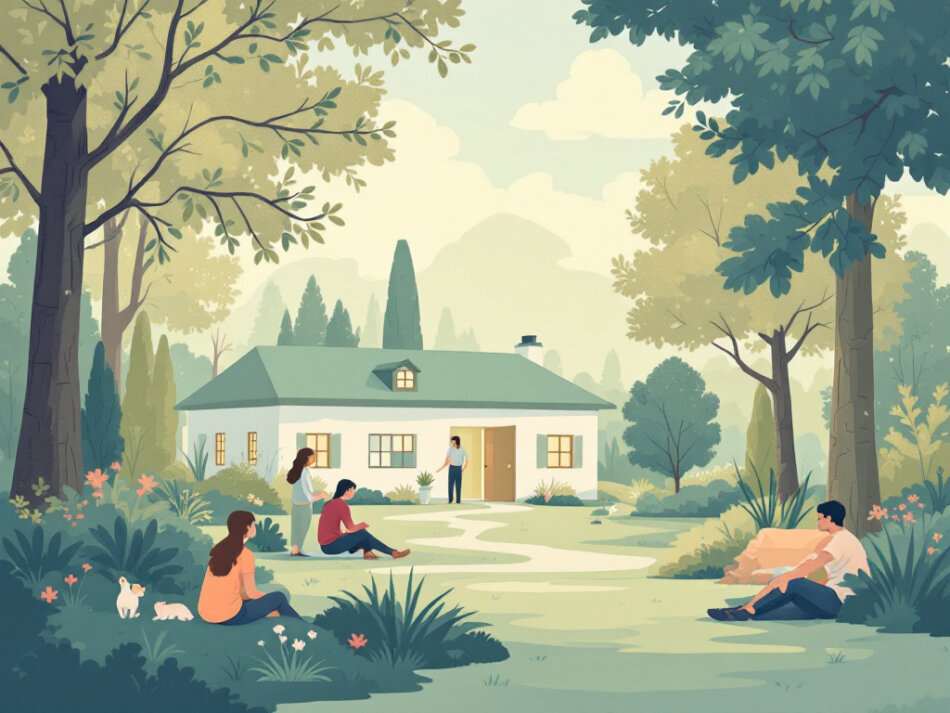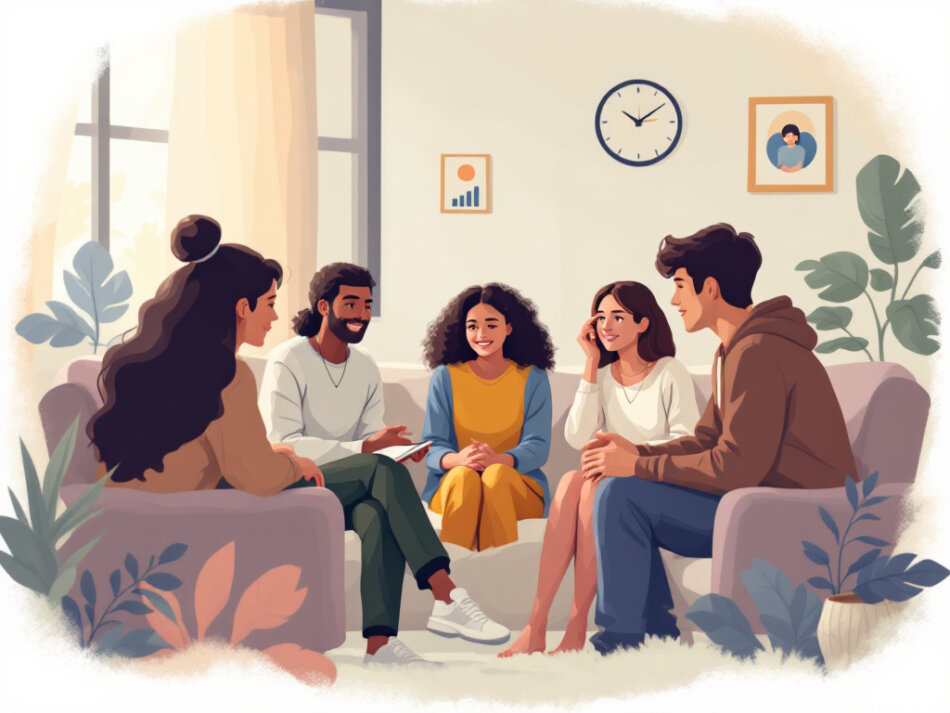Therapy for teen trauma through art and movement offers an engaging path when traditional talk therapy feels too clinical or constraining. By tapping into creative expression and embodied activities, your teen can build emotional regulation, confidence, and communication skills in a holistic environment. Many of these programs work alongside clinical therapy, and you’ll find most accept insurance, easing the financial burden of comprehensive care.
Explore art therapy
Art therapy provides a non-verbal outlet for teens to process complex feelings, especially if they struggle to express themselves with words. In guided sessions, your teen uses materials and prompts to transform inner experiences into tangible imagery, fostering insight and healing.
Benefits of art therapy
- Encourages self-awareness and emotional insight
- Reduces anxiety and supports coping strategies
- Facilitates trauma processing without pressure to verbalize
According to the Western Journal of Medicine, adolescents often reveal forbidden emotions through symbolic artwork, allowing therapists to engage in dialogue rather than direct questioning (1994) [1].
Art therapy techniques
Tailoring materials and activities to developmental needs can maximize impact. Common techniques include:
Emotion color swatches
Teens associate colors with feelings, creating a visual map of their mood shifts and triggers. This exercise fosters greater emotional awareness and language for otherwise abstract experiences [2].
Self-portrait exploration
By drawing or painting themselves, teens externalize self-image, identity questions, and trauma memories. Guided reflection on these portraits supports integration of fragmented experiences.
Group mural projects
Collaborative art builds peer support and community. Working together on a shared canvas promotes trust, connection, and a sense of belonging—key factors in healing trauma [2].
For more on creative approaches, explore our resource on art and music therapy for teens.
Implement music and movement
Integrating sound and motion amplifies emotional release and mind-body connection. These expressive therapies complement visual art by engaging different sensory pathways.
Music movement activity
Also called “Music Movement,” this exercise pairs rhythmic music with guided movement to help teens discharge negative energy, lift mood, and access feelings stored in the body. It’s especially effective for trauma recovery and mood regulation [2].
Dance/movement therapy benefits
Dance/movement therapy (DMT) enhances sensory-motor perception, body awareness, and emotional processing. A systematic review found DMT improves identification and expression of fear, shame, and guilt, while fostering group safety and peer support [3].
Multimodal expressive methods
Combining drama, music, and movement creates a rich, multi-sensory environment. For example, teens might improvise a short dance reflecting a memory, then sketch key moments, integrating modalities to deepen reflection [4].
Consider equine therapy
Equine therapy pairs teens with horses to build trust, emotional regulation, and self-esteem. Interactions with horses require clear nonverbal communication, mirroring the skills teens need in human relationships.
Emotional regulation through horses
Horses respond to unspoken cues, helping teens become aware of their internal state and adjust behaviors. Learning to stay calm, grounded, and empathetic around a large animal fosters self-control and mindfulness.
Building confidence and communication
Leading a horse through obstacle courses or grooming routines develops leadership skills, confidence, and responsibility. These successes transfer to improved peer interactions and self-advocacy.
Insurance acceptance
Many equine therapy programs fall under experiential therapy and accept major insurers. Verify coverage by asking for a treatment plan code from the provider and checking your policy’s behavioral health benefits. For more holistic options, see equine therapy for adolescents.
Embrace outdoor adventure
Adventure-based and outdoor therapies leverage nature and physical challenges to engage teens who resist traditional settings. These programs blend wilderness activities with therapeutic goals.
Outdoor therapy programs
From backpacking trips to ropes courses, outdoor therapy emphasizes teamwork, resilience, and self-discovery. Instructors guide reflection on experiences like navigating a trail or overcoming a high-ropes challenge.
Adventure therapy benefits
- Enhances problem-solving and decision-making
- Builds social skills and trust within a group
- Promotes physical health and stress relief
Research shows therapeutic recreation fosters lasting emotional regulation skills and equips teens to face real-world stressors [4].
Therapeutic recreation options
Activities such as rock climbing, kayaking, or geocaching combine adventure with structured debriefs. Many of these programs accept insurance under outpatient or partial hospitalization benefits. Learn more about adventure therapy for teen recovery.
Integrate mindfulness practices
Mindfulness and yoga programs teach teens to tune into bodily sensations and thoughts without judgment. These skills strengthen self-regulation and reduce anxiety.
Mindfulness and yoga therapy
Guided meditation, breathwork, and gentle movement help teens cultivate present-moment awareness. Regular practice builds resilience to stress and supports emotional stabilization.
Experiential DBT integration
Some holistic centers offer experiential dialectical behavior therapy (DBT) that incorporates mindfulness, distress tolerance exercises, and creative expression. This blend helps teens manage intense emotions and reduce self-harm urges.
Emotional resilience skills
By learning to observe thoughts rather than react, your teen can interrupt negative cycles and choose healthier responses. For programs that blend these approaches, explore experiential DBT and mindfulness for adolescents or mindfulness and yoga therapy for teenagers.
Coordinate care and coverage
Holistic and creative therapies work best when integrated into an overall treatment plan. Collaborating with clinical providers ensures consistency and maximizes outcomes.
Clinical therapy collaboration
Encourage your teen’s art and movement therapists to communicate with psychologists or psychiatrists. Shared progress notes and joint care meetings help align goals, whether you’re pursuing trauma-focused CBT, EMDR, or other modalities.
Insurance for holistic programs
Most experiential and holistic therapies qualify under mental health benefits. To secure coverage:
- Obtain a recommendation or prescription from your teen’s psychiatrist or psychologist.
- Verify the provider’s credentials and billing codes.
- Submit preauthorization requests to your insurer.
Working with an administrative coordinator at the therapy center can streamline this process. For more on finding covered options, see teen holistic therapy that accepts insurance.
Selecting the right program
When evaluating programs, consider:
- Teen’s interests and comfort zone
- Therapist credentials and facility accreditation
- Integration of clinical and experiential elements
- Insurance acceptance and out-of-pocket costs
Tour facilities, meet staff, and ask for family testimonials. A program that feels welcoming and aligns with your teen’s needs will encourage engagement and sustained progress.
Conclusion
By exploring therapy for teen trauma through art and movement, you open doors to healing pathways beyond traditional talk therapy. Creative modalities—art, music, equine, outdoor, and mindfulness-based programs—offer hands-on approaches that build emotional regulation, confidence, and communication skills. When coordinated with clinical therapy and covered by insurance, these holistic options can transform trauma recovery into an empowering journey for your teen. For additional holistic supports, visit our page on holistic mental health program for teens and discover programs tailored to your teen’s unique strengths and challenges.











